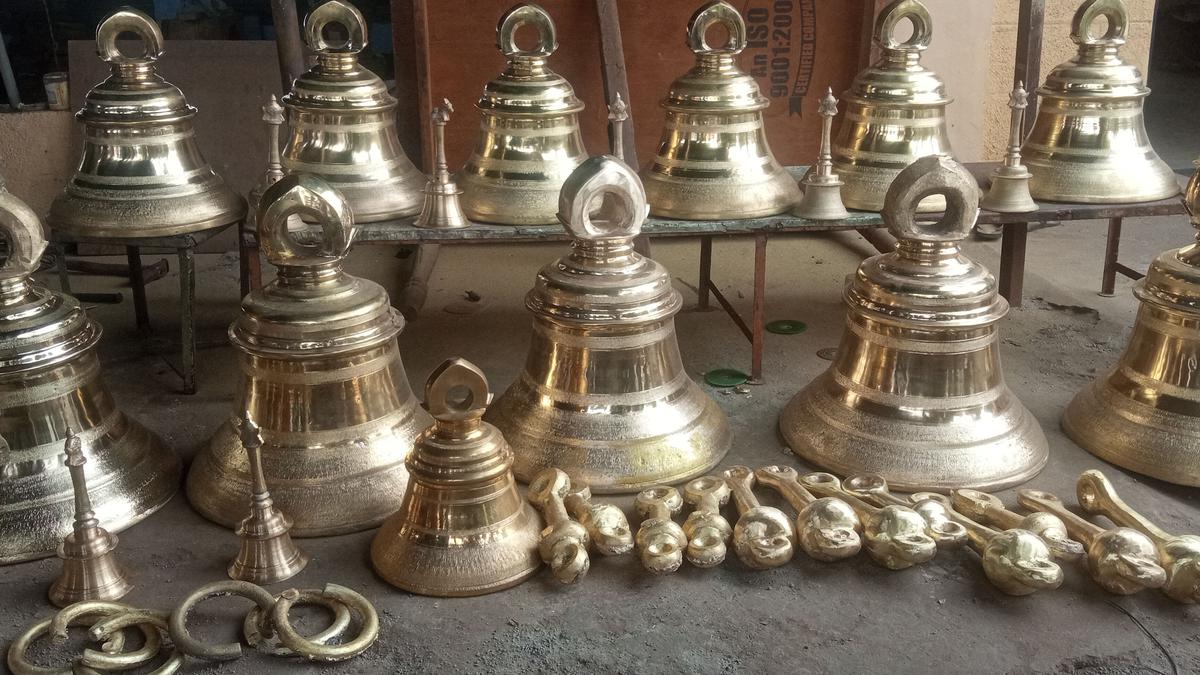
Bells for Ram Mandir, manufactured in Namakkal, sent to Ayodhya
The Hindu
42 bells manufactured in Namakkal for Ram Mandir in Ayodhya sent to Bengaluru after special pujas.
A total of 42 bells for Ram Mandir at Ayodhya that were manufactured in Namakkal district, were sent to Bengaluru after special pujas on Thursday.
The temple consecration will be held in January 2024. A devotee from Bengaluru, Rajendra Prasad (69), had given orders for manufacturing 48 bells at an unit, Andal Moulding Works, on Mohanur Road in Namakkal district, last month for installing in the temple.
Of the total, 42 bells weighing 1,200 kg was completed and, after a special puja at the Namakkal Anjaneyar Temple in the afternoon, sent to Bengaluru.
Andal Moulding Works proprietor R. Rajendran (66), said that his family had been in this business for the past seven generations. Mr. Prasad came to know about our work and approached us through a trader in Chennai. Mr. Prasad got an order from the Ram Mandir administration to supply bells for the temple, he said.
“He provided all the materials we needed, including silver, copper, and bronze, for the making of the bells. For making a bell, he gave ₹600, though normally we charge ₹1,200 for a bell. But as these bells were being sent to Ram Mandir, we accepted the amount given by Mr. Prasad. Using 20 workers for the past one month, we have manufactured the 42 bells, and work is under way for the remaining six bells. The weight of the bells vary- five bells weigh 120 kg each, six bells weigh 70 kg each, and one bell weighs 25 kg. Before January 22, the remaining bells will also be sent to Ayodhya, Mr. Rajendran said.
On Friday, special pujas will be conducted for these bells, and after that, they will be sent to Ayodhya, he added.

Hampi, the UNESCO-recognised historical site, was the capital of the Vijayanagara empire from 1336 to 1565. Foreign travellers from Persia, Europe and other parts of the world have chronicled the wealth of the place and the unique cultural mores of this kingdom built on the banks of the Tungabhadra river. There are fine descriptions to be found of its temples, farms, markets and trading links, remnants of which one can see in the ruins now. The Literature, architecture of this era continue inspire awe.

Unfurling the zine handed to us at the start of the walk, we use brightly-coloured markers to draw squiggly cables across the page, starting from a sepia-toned vintage photograph of the telegraph office. Iz, who goes by the pronouns they/them, explains, “This building is still standing, though it shut down in 2013,” they say, pointing out that telegraphy, which started in Bengaluru in 1854, was an instrument of colonial power and control. “The British colonised lands via telegraph cables, something known as the All Red Line.”









